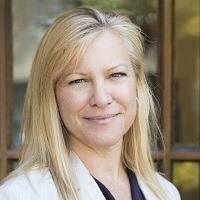The Role of Healthcare Executives in Translational Research
MHA Search
For the latest academic year, we have 170 schools in our MHAOnline.com database and those that advertise with us are labeled “sponsor”. When you click on a sponsoring school or program, or fill out a form to request information from a sponsoring school, we may earn a commission. View our advertising disclosure for more details.
“I will solicit ideas for projects, and ask organizations if they have a pressing issue or problem that they want us to research for them. I’ll say, “Give us something complex, and strategic, and difficult. Don’t give us something easy.”
Dr. Suzanne Wood, Assistant Professor in the University of Washington’s Department of Health Services
An estimated 1.8 million scientific articles are published every year. Some of those contain research findings that could be applicable and beneficial to healthcare systems and healthcare facilities across the nation. But how do those findings get discovered by, adapted to, and implemented in the facilities that could benefit from them most? The research itself requires more research.
While the American public debates different models of top-down healthcare policy, a dynamic ecosystem of experts is working together to answer precise questions with granular, contextualized, and evidence-based responses. Major stakeholders include healthcare executives, governments, nonprofit organizations, researchers, and professional associations. But MHA students, like those at the University of Washington, play a key role as well.
“Right now, we’re working with the State of Washington on health equity across the state,” says Dr. Suzanne Wood, an assistant professor in the University of Washington’s Department of Health Services. “They want to understand a framework, or a process, by which they could craft policy so that executives in healthcare could leverage that policy to enhance patient care delivery, access to care, and quality of care. Our master’s of health administration students are actually working with hospitals and health systems here, using theory and research.”
Expert Spotlight: Dr. Suzanne Wood (University of Washington)

Suzanne Wood is an assistant professor in the Department of Health Services at the University of Washington. A lieutenant commander in the U.S. Navy Reserve, she has 25 years of healthcare experience, with expertise in international business strategy and healthcare management. Dr. Wood has served as a consultant for numerous strategic planning initiatives for the military health system, public and nonprofit service organizations, and foreign governments.
At the University of Washington, she teaches courses on applied research and healthcare strategy and conducts translational research on healthcare strategy, business operations, and service delivery. She is a fellow of the American College of Healthcare Executives. Dr. Wood has a PhD in business administration from Old Dominion University.
Case Study: Testing Value-Based Payments in Healthcare
These students are also working with the State of Washington on a possible shift towards value-based payments. In a value-based system, providers are incentivized on quality metrics, rather than volume. That represents a huge change, and one that has ripple effects across multiple workflows and processes. To get it right requires diligent research.
“I guide the students through the process of looking at evidence-based research that has already demonstrated either this works, or it doesn’t work, or it has mixed results,” Dr. Wood says. “They synthesize the research and theory. And, again, as a professor, I guide them through that. Then they make recommendation to organizations, so they can better use evidence to enhance how they posture themselves with regard to a policy that’s coming down from the feds, or, in this case, the state.”
This is translational research in action, and to health services researchers and faculty members like Dr. Wood, it’s their bread and butter. But by involving MHA students, they also produce graduates who are more informed and more capable healthcare executives. That integration of academic education and community development is known as engaged scholarship, and it plays a significant role in shaping policy that, in turn, can have an enormous impact.
Translational Research in Graduate Programs
Right now, the MHA students at the University of Washington are working on 12 different research-based projects. Those projects usually start with a question. It can be an incredibly targeted question (e.g., a feasibility study on the dental clinics of the Cowlitz Tribe: where should they put them, how should they construct them, and who should they partner with in that process?), or it can be an incredibly broad question (e.g., how should the State of Washington integrate its behavioral health and primary care systems?).
“I will solicit ideas for projects, and ask organizations if they have a pressing issue or problem that they want us to research for them,” Dr. Wood says. “I’ll say, ‘Give us something complex, and strategic, and difficult. Don’t give us something easy.’”
Dr. Wood’s students are grouped into teams of three and assigned to a particular question. Over the course of 10 to 20 weeks, they’ll study the available literature and produce a final report with a summary of their research and a list of recommendations. At the end of that work, some querying organizations may wish to delve further into a key issue or problem by offering a student an internship and/or publicly issuing a contract or grant for further research.
“This is a collaborative, ongoing process that doesn’t always end after 10 or 20 weeks,” Dr. Wood says.
The output of this process has value to more than just the organization making the initial request. In addition to a final whitepaper being shared out, Dr. Wood and her students may publish their findings in peer-reviewed journals. That makes the findings available to other academics, policymakers, and professional associations, each of which have a role to play in disseminating the information further.
Moving From Research to Policy: The American College of Healthcare Executives
Dr. Wood is a board-certified fellow of the American College of Healthcare Executives, and she points to this organization as a key node in the research-to-policy pipeline.
“The American College of Healthcare Executives is one of the premiere organizations for healthcare administrators in the United States,” Dr. Wood says. “Oftentimes, our research gets presented at places like that, where practitioners come in annually, to Chicago, for a large congress. It’s attended by around 5,000 people a year, maybe more, and they’re all health administrators, executives, and consultants. But that’s also where we disseminate our findings and say this is what we’re learning, and this is what the field needs to know.”
One of the biggest barriers to implementing this research into practice is pushback from healthcare executives and care providers who have anecdotal experience about what works and what doesn’t in a particular healthcare setting. When researchers like Dr. Wood propose something novel, it can be difficult for veterans of the industry to change their way of thinking. Each health system and healthcare facility is already dealing with massive amounts of change in payment models, technologies, and day-to-day operations. Suggesting further change on top of that can sometimes seem like a burden.
“Change management is really important when you’re doing this,” Dr. Wood says. “If you’re finding evidence to support a change, you’ve got to get buy-in before you can implement that change.”
Healthcare executives play a critical role in the pipeline of translational research even when the topic isn’t strictly related to healthcare. Basic management principles can have a huge effect on a health system’s operations, but healthcare executives who come from a physician or nursing background might not be up-to-date on the literature, or they may lack previous administrative experience. Health administration students and graduates can provide them with management approaches, tools, and tips for successful operational frameworks within a health system or healthcare facility.
“There are a lot of opportunities,” Dr. Wood says, “and understanding how to prioritize those opportunities is important.”
Healthcare has always been a dynamic field. New technology, new research, and new policy make for an ever-rotating environment full of complex questions. Behind the scenes, researchers like Dr. Wood, as well as graduates and students of MHA programs like the one at the University of Washington, are shaping that environment in a more grounded, evidence-based manner. For them, each question is also an opportunity to make a difference, and, as Dr. Wood says, there are a lot of opportunities.

